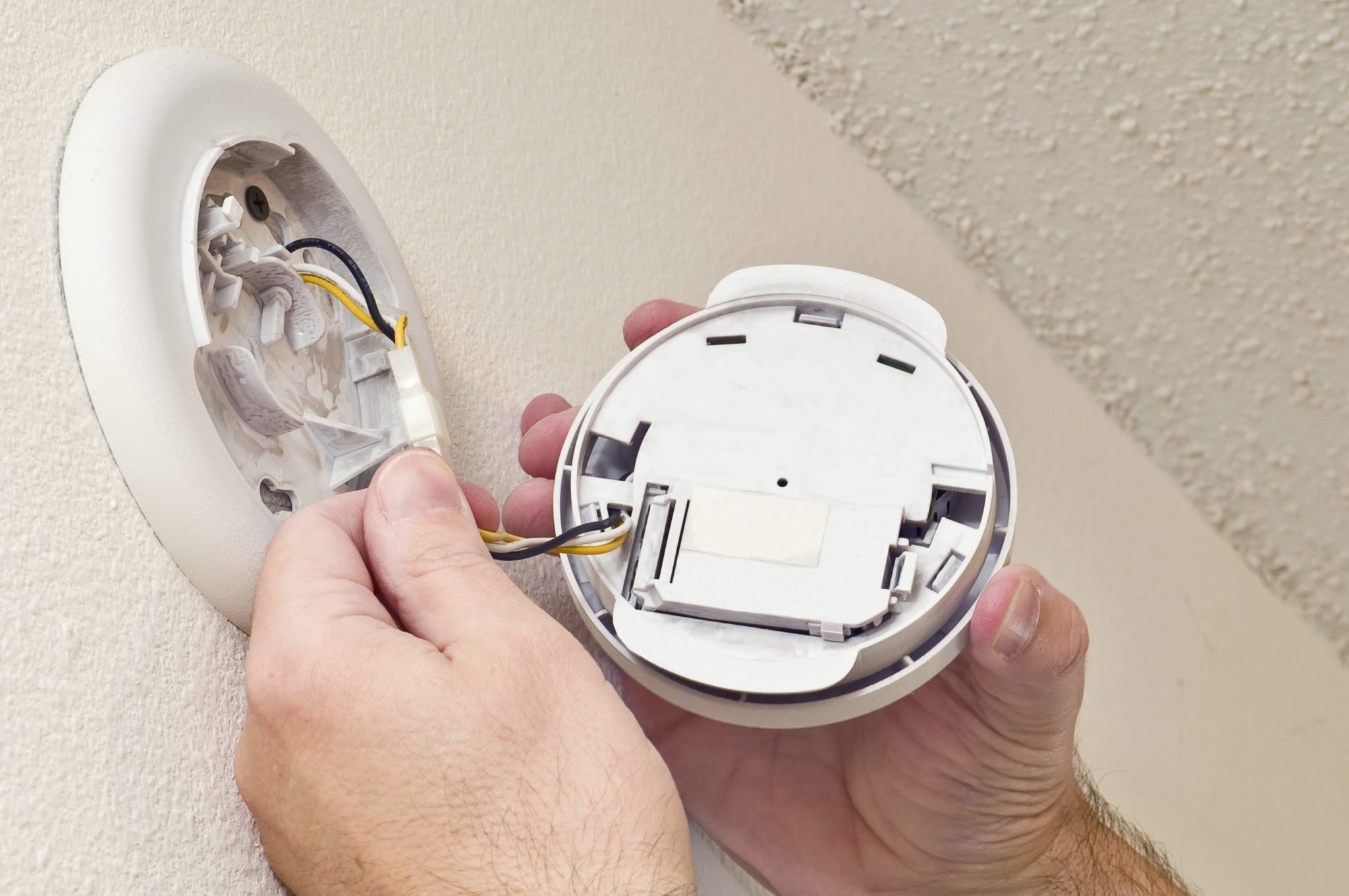Smoke detectors are one of your first defenses to stay safe from fire and reduce damage. When properly installed and maintained, they can alert you to trouble at the first whiff of smoke and reduce the risk of death by half.1
Below, we share our tips for safely selecting, maintaining, and installing these handy safety devices.
1. Research and pick your smoke detectors
If your current detectors are more than 10 years old—or if your home doesn’t have detectors at all—invest in new ones right away.
Before you make a purchase, conduct some research about the different types of smoke sensor alarms. There are a variety of brands, models, and price points that are available so you can pick the detector that best meets your safety needs and budget.
2. Purchase detectors for every level of your home
Your house’s layout will determine how many detectors you need, but at a minimum you should install one on each level of the home, with at least one inside each bedroom and one outside of every sleeping space. As you’re tallying up the number of devices you need, don’t forget to count basement and attics as separate levels.
3. Promptly install your alarms in central locations
Install your smoke alarms as soon as possible—you don’t want to be spending any nights without the detectors’ protection. Place each alarm on a flat stretch of wall or ceiling, roughly in the center of the room. For wall placed devices, make sure that the detectors are about 12 inches or fewer from the ceiling.2
Read and follow your device’s instructions carefully when performing the installation, especially if the detectors require hardwired power. If you are nervous about the setup process, find a professional to install the alarms for you.

4. Test your smoke alarms immediately after installation
Once you have installed the smoke alarms, test the detectors out with everyone in the home. Press the test button on each device individually, ensuring that every person can easily recognize the sound of the alarm. This initial test is also a great time to discuss your home evacuation plan, along with routes and outside meeting points. The U.S. Fire Administration outlines a variety of exercises to add to your fire drill so that each family member is prepared and has a greater chance of getting out unharmed if a fire ever breaks out.
5. Perform power tests monthly
Though some smart detectors are self-testing, it’s generally a good idea to manually test your detectors at least once per month. To run a test, push the smoke detector’s test button, verifying that the sensor is operational and the alarm sounds at the optimal volume. If you have fire alarms in areas of your home you can’t easily reach, take precautions when climbing up to test them. Use a sturdy stepladder—never a chair—and perform these tasks while another family member is home.
6. Replace non-hardwired detectors’ batteries annually
If your detector runs on batteries, don’t wait until you find the batteries dead to change them out. Instead, set an annual battery replacement date on a special occasion—the first day of summer or Memorial Day, for example. Picking a well-known date will help you remember the task. Always refer to the manufacturer’s guide and follow the instructions when replacing your smoke alarm’s batteries.
7. Thoroughly clean your detectors at least once per year
Dust and pollutants can impede fire alarm performance, so try to keep your detectors clean. An occasional light dusting with a dry rag should easily remove any exterior dust, but you’ll also want to perform deeper cleans annually.
To do a thorough cleaning, take the device off of the wall or ceiling, remove the power source, and then gently take off the external casing. Carefully clear out any collected dust using a vacuum attachment, a compressed air can, or a dry cloth—avoiding liquid sprays or cleaners. Once all dust is gone, you can reassemble the detector and place it back on the wall or ceiling.
Final word
Fire safety is a vital component of a homeowner’s responsibility. Hopefully you’ll never experience a house fire, but it’s a good idea to be prepared. Follow the steps above to help ensure that your home is as safe as possible, and check out our recommendations for the Best Fire and Smoke Alarms.
Related pages on Safewise
Sources
- National Fire Protection Association, “Smoke Alarms in U.S. Home Fires“
- First Alert, “Proper placement for smoke alarms, CO alarms, and fire extinguishers“
The post A Guide to Smoke Detector Installation and Maintenance appeared first on SafeWise.
Article source here: A Guide to Smoke Detector Installation and Maintenance
No comments:
Post a Comment